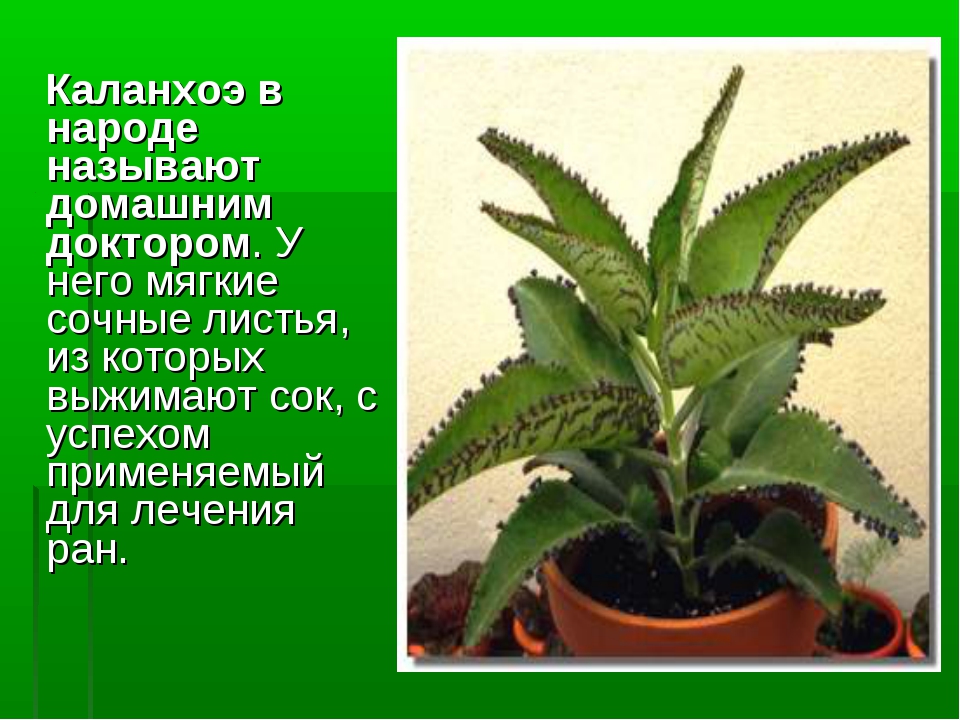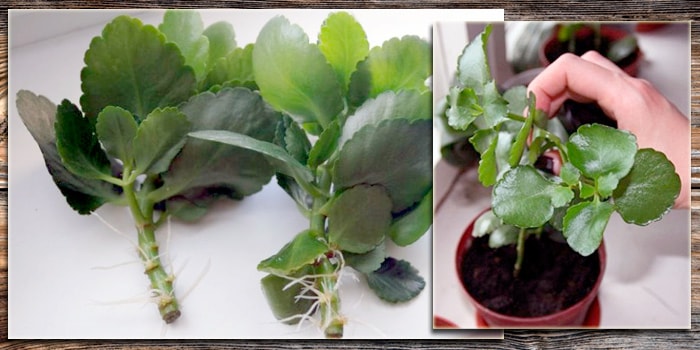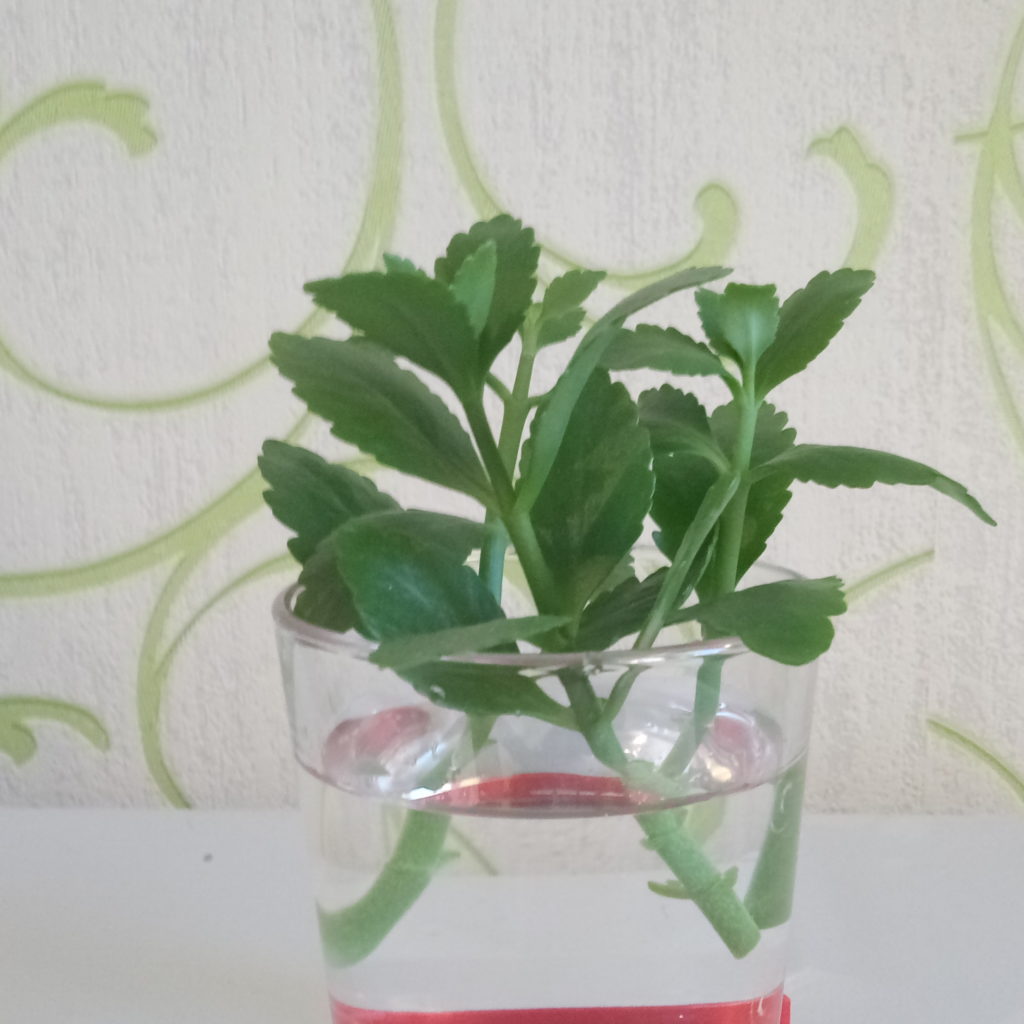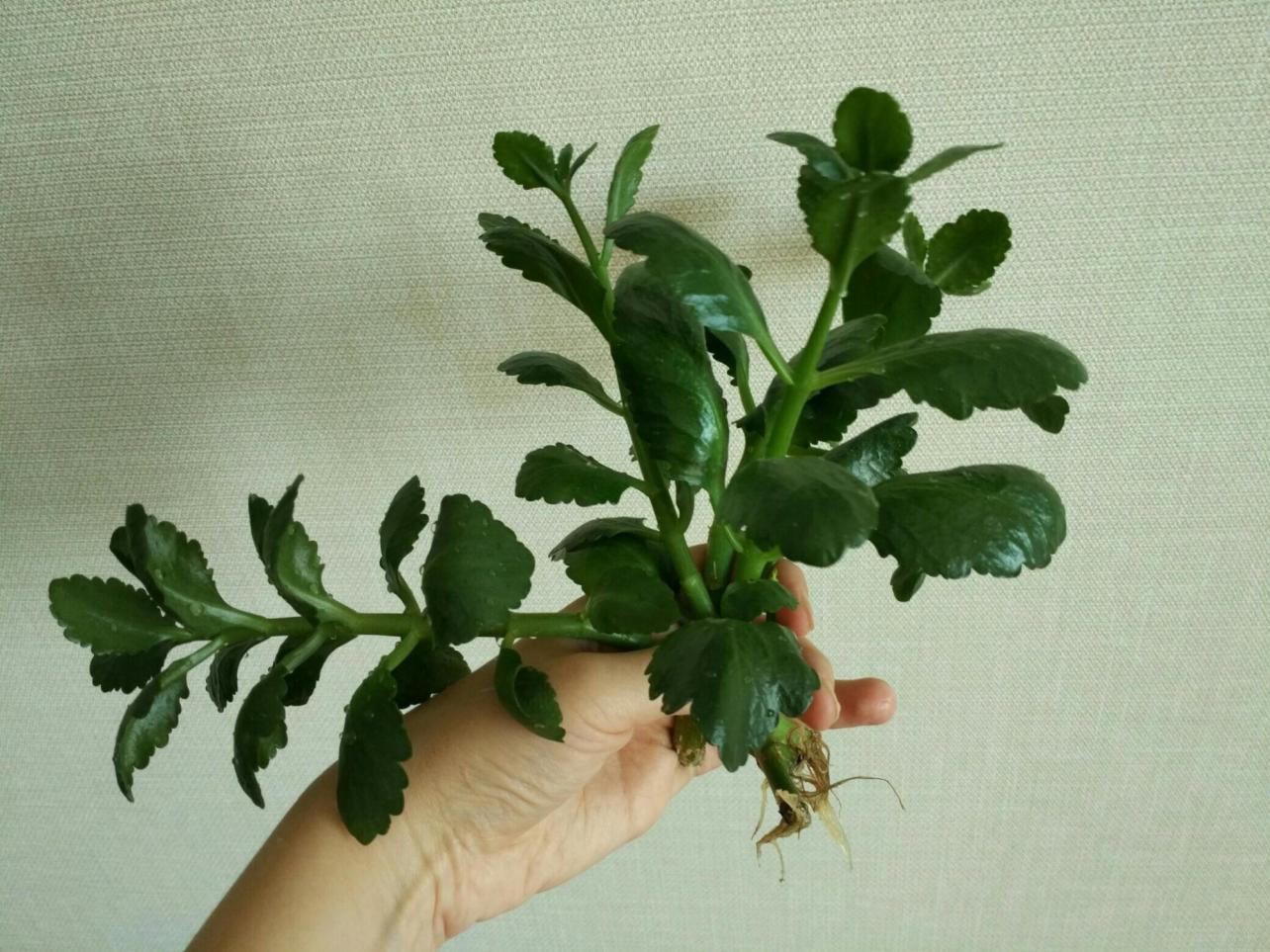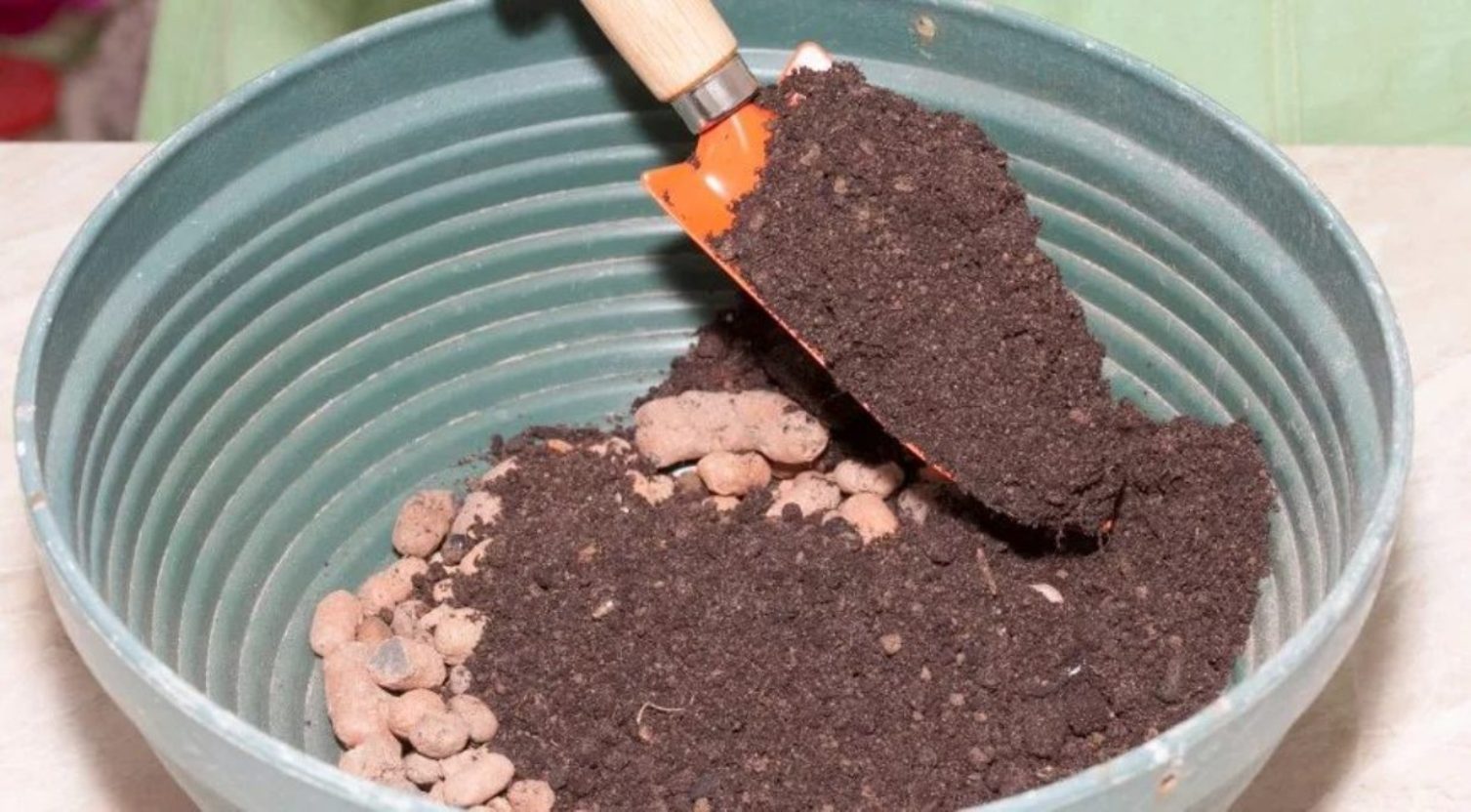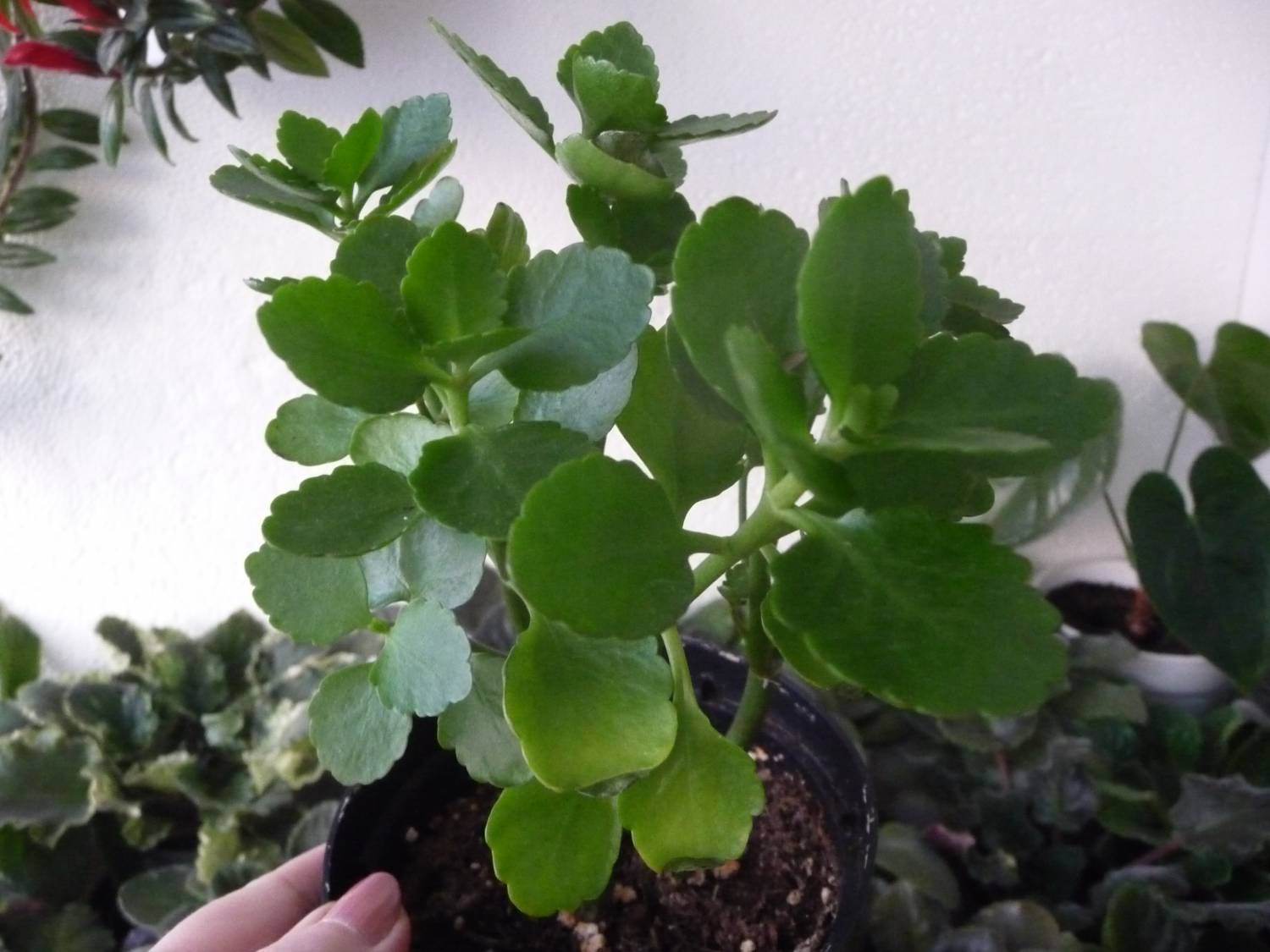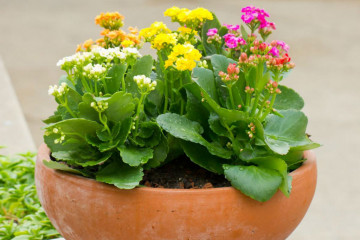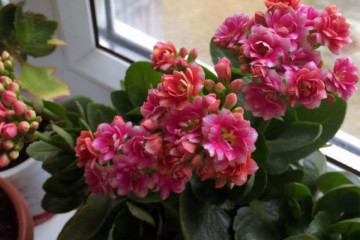Kalanchoe reproduction: options and methods at home
Content:
Kalanchoe is present in almost every house that has indoor plants. Such popularity is based on its extraordinary medicinal properties. There are other popular names for it - home doctor or ginseng. There are up to 200 species of Kalanchoe, but about 20 are grown at home. The home doctor is unpretentious in care, able to endure both drought and high humidity. In addition, the reproduction of Kalanchoe also does not cause much trouble.
Breeding period for Kalanchoe
Before propagating Kalanchoe, you need to familiarize yourself with the features of the flower. It is characterized by thickened fibrous roots, fleshy stems, and succulent leaves. The arrangement of leaves on the stem is spiral. The shape and surface of each species is different: with a smooth edge, feathery or jagged. It also differs in the size of the sheet plate. Flowers are small, four-petaled. The peduncles themselves are formed mainly at the top of the plant, less often in the leaf axil.
There are several ways to propagate Kalanchoe. They all come down to two types - vegetative and seed. The dilution period is determined by the chosen method:
- the seeds of the plant are sown into the soil at the end of winter;
- the vegetative method can be used regardless of the season;
- babies appear on brood buds throughout the year, so their rooting can be performed even in the winter season;
- cuttings, leafy planting material or cuttings are best harvested in the spring.
How to dilute the Kalanchoe correctly so that in the future the plant develops correctly and does not undergo various kinds of diseases:
- Kalanchoe cuttings are performed with a sharp knife. It is preliminarily wiped with alcohol or heated over a fire, which reduces the likelihood of infection of the plant with bacteria and fungi;
- The stalk is selected up to 10 cm long. The shoot must be very young. Its rooting will be faster;
- the shoots are first dried for two days in order to avoid decay of the base of the cutting;
- when propagating by leaf plates, make sure that the leaves are planted in the ground in a horizontal position;
- for germination of roots, only boiled water is used, the replacement of which is carried out every two days;
- it is advisable to plant in ceramic pots. In plastic containers, the processes take root worse;
- watered carefully so that water does not get on the plant, and in small doses.
Kalanchoe: reproduction by various options
Before propagating Kalanchoe, a suitable method is chosen. Florists often use the vegetative method, namely by cuttings. This is one of the most effective ways, since the plant takes root and develops faster. Cuttings are harvested during spring pruning. Up to 10-15 shoots can be obtained from one adult flower for pruning.
The next method, which does not create problems for indoor plant lovers, is reproduction by children.They take root spontaneously in the soil next to the mother plant. It remains only to transplant into a new container. The only drawback is that a plant develops, obtained from children for a long time. On average, it takes about two years to get a full-fledged plant.
Reproduction from a leaf is more time consuming. For this purpose, sheet plates are selected that do not form children. Growing an adult plant from such material will not work quickly.
Sheet
One of the common ways to obtain young Kalanchoe plants is to use leaf cuttings. You can use it at home all year round. Before propagating the Kalanchoe with a leaf, it is necessary to prepare the material. To do this, select a well-developed leaf on an adult plant and carefully cut it off with a sharp knife. The best material is medium-sized sheets.
The cut leaves are planted in a container filled with a moist substrate. Moistening is carried out with a solution of root and water. Dilute 1 g of powder in 1 liter of water. The condition of the soil is monitored constantly, avoiding drying out. The substrate itself is prepared from river sand and peat in a ratio of 10: 1.
The leaf is buried in the soil by about 1-1.5 cm. The container is installed in the house in such a place that natural light is provided as much as possible.
Many amateur flower growers first germinate the leaves in water. To do this, the container is covered with a transparent lid so that the liquid does not evaporate. Roots appear in 12-15 days. Even fallen leaves are suitable for reproduction of Kalanchoe in this way. The main thing is that they are not completely dry.
Cuttings
Another popular way to get young plants at home is propagation of Kalanchoe by cuttings. It is held at any time, regardless of the season.
Cuttings are obtained by pruning an adult plant after flowering. During the growing season, the stems of the flower are stretched, so they must be pruned. The material is well suited for propagation by cuttings.
After the cuttings are cut, it is necessary to cut off the bottom pair of leaves and leave the shoots for two days to dry. How to choose the right cuttings and how to root the Kalanchoe will be prompted by step-by-step instructions:
- Before cutting Kalanchoe, shoots from 6 to 9 cm long are chosen. Those shoots that are cut from the tops of the plant develop better. The ideal appearance of the cutting - the leaves are even, and the distance between the nodes is small.
- After drying, the cutting is placed in water, the temperature of which should correspond to 20-25 ° C. After the appearance of the roots, they are planted in the substrate.
- The prepared shoot can be immediately planted in the prepared soil. In this case, the place of the cut on the cutting is sprinkled with crushed charcoal a little. It is deepened into the soil by about 2 cm. With systematic watering, roots will appear in a week.
- The soil for Kalanchoe should not be acidic. For its preparation, a mixture of sod land, leafy soil and river sand is used in a ratio of 4: 2: 1. It is advisable to add a little humus.
- After rooting of the shoots, after about two weeks, they begin to pinch, whereby they form the shape of a bush.
Seeds
The most time consuming method is the reproduction of Kalanchoe by seeds. It is impractical to use it at home. It is suitable for obtaining a large number of seedlings. The seeds are purchased in specialized stores.
They are sown in light soil around the end of winter.The substrate is first steamed well to get rid of bacteria, rot and mold. Then they are placed in containers and the surface is well leveled.
The seeds are very small, so they are sown in two ways:
- on a slightly moistened surface, shallow grooves are made, into which seeds are placed with a step of 3-4 cm;
- the seeds are evenly distributed on the surface and sprinkled with a little soil. Then the soil is moistened.
Before germination of seeds, the temperature in the container is kept within the range of 16-18 ° C. You need to wait for seedlings in about a month. Until the sprouts reach a size suitable for planting in a separate container, they are dived twice.
Reproduction by offspring
Offshoots are shoots that sprout in the ground from the roots of the mother plant. Over time, the offspring separate from the adult flower, forming their own root system.
To use them for reproduction, you must choose shoots that have grown to a length of 1/3 or 1/2 the height of the mother plant. They are separated by means of a knife and transplanted into a prepared container with a substrate. Thanks to the shoots, the new Kalanchoe bush grows very quickly.
Dividing the bush
One of the easiest ways to reproduce Kalanchoe is by dividing the mother plant. For this, the flower is removed from the pot and divided into several parts. This procedure is carried out carefully so as not to severely damage the roots. Then each part must be planted in a separate pot, suitable in size, filled with fresh soil.
Features of the reproduction of Kalanchoe of different species
Before you start breeding Kalanchoe, you need to take into account the fact that some species have their own characteristics in carrying out the breeding process:
- Degremona. Cirrus and tubotvetnye reproduce well by children;
- Kalanchoe Kalandiva is suitable for propagation by cuttings. This is the best way for Magnin, Blossfeld;
- petal cuttings propagate all types of plants that have a fleshy green mass;
- separation by offspring is only suitable for Blossfelde;
- paniculate Kalanchoe species are best propagated by kidneys;
- the seed type of propagation is used for feathery and felt types of flowers.
Further care of the flower
During planting, the plant experiences severe stress. It needs time for it to begin to develop fully. During this period, proper flower care plays a huge role. It begins at the stage of selection of capacity and soil.
Preparing the pot
You need to choose a container made of clay and small in size. A hole must be made at the bottom of the pot. Before planting, the container is treated with boiling water, placed in hot water for 2 hours. Then drainage is poured to the bottom, which is used as coarse sand, expanded clay or clay shards.
Soil selection
The substrate for planting Kalanchoe is sold in specialized flower shops, but the soil is not difficult to prepare yourself. This will require turf, leaf soil, peat and sand in a ratio of 4: 2: 1: 1. You can add a little mullein. To increase the looseness of the soil, perlite or crushed birch charcoal is added to the resulting mixture.
Lighting
Young Kalanchoe plants do not like bright lighting. Therefore, they need to be placed in the house in a place where direct sunlight does not fall. In the summertime, it should be a little shaded place, but natural light should hit the plant for at least 12 hours.In winter, the duration of light exposure should not be less than 8 hours.
Temperature
For the correct development of young plants, they provide the optimum temperature for them. In spring and summer, Kalanchoe feels comfortable at temperatures from 18 ° C to 30 ° C, and in autumn and winter from 15 ° C to 20 ° C. The flower can easily survive a short-term drop in temperature or a slight draft. But at rates below 10 ° C, the plant may suffer and die.
Humidity and watering
For Kalanchoe, average moisture values are optimal. In winter, it is not recommended to spray the plants. On hot summer days, spraying of the green mass is allowed, but immediately after this procedure, all leaves are wiped with a soft and damp cloth. The exceptions are those subspecies in which the castings are lowered downward in their arrangement. It is not recommended to spray them.
Watering is carried out as the soil dries out. The usual mode in the summer is twice a week, and much less often in the winter.
Top dressing
For feeding, use a special fertilizer for succulents. In the summer, the plant is fed twice a month. In winter, when the flowers are dormant, there is no need to fertilize them.
The fertilization process is combined with watering. First, the Kalanchoe is watered with a small amount of clean water, and then the necessary portion of fertilizers. The proportions of the preparation of the solution are indicated in the instructions on the packaging of the product.
Topping
As the young shoots grow, periodic pinching is carried out. This procedure is necessary for the correct formation of the bush and getting rid of the tops, which, with the lengthening of the stem, begin to shrink and lose their attractiveness. Pinching is done with sharp scissors. Sections are treated with crushed activated carbon.
Knowing how Kalanchoe reproduces, at home you can get gorgeous bushes of this medicinal flower. Everything is actually easy and simple, the main thing is to choose the appropriate method for this or that type.
